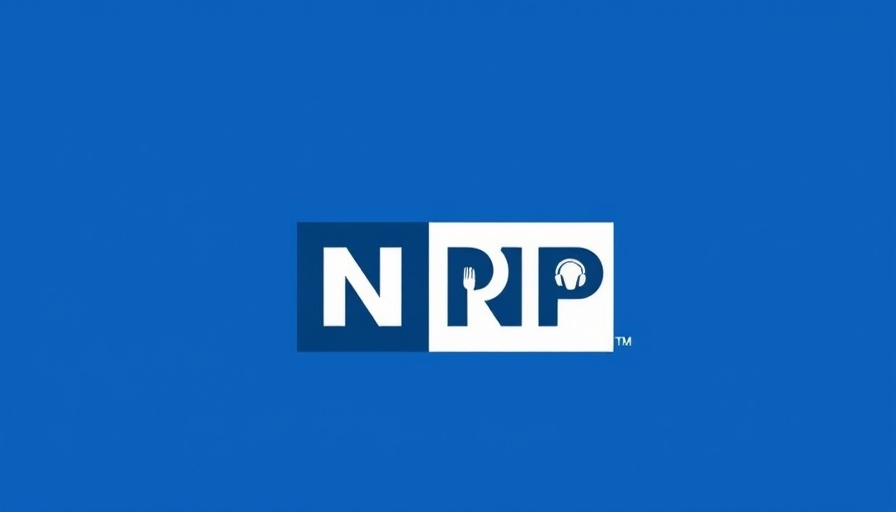
TrumpRx: A New Era for Medical Accessibility
In a significant announcement made on September 30, 2025, President Trump introduced a direct-to-consumer initiative with pharmaceutical giant Pfizer aimed at lowering drug prices for American consumers. This initiative will be accessible through the upcoming TrumpRx website, where patients can purchase medications at discounted rates—marking a pivotal moment in the healthcare landscape.
Details of the Initiative
TrumpRx, set to launch in early 2026, seeks to address the longstanding issue of high medication costs that Americans face compared to their international counterparts. The president underscored the objective of the program: to ensure that U.S. citizens are no longer subsidizing healthcare for other countries. In his announcement, Trump stated, "The United States is done subsidizing the health care of the rest of the world," indicating a fierce commitment to change the status quo.
The TrumpRx initiative signifies the culmination of numerous negotiations and pressures exerted on pharmaceutical companies to reduce their pricing models to be more in line with global standards. Under the deal, Pfizer has agreed to offer substantial discounts on various medications, with an average reduction of 50% on select drugs. This includes a commitment to sell medicines for Medicaid at “Most Favored Nation” pricing, which would ensure that prices reflect the lowest charges from peer nations.
Consumer Impact and Reactions
Though this announcement has been celebrated by supporters as a move towards improving healthcare access for lower-income Americans, experts remain skeptical about its long-term efficacy. Currently, many pharmaceutical companies market their medications to consumers at rates lower than the total cash price, yet they are often still higher than out-of-pocket costs for insured patients. For example, alternatives like Novo Nordisk's cash price for their weight-loss drug, Ozempic, remains significantly below the monthly insurance costs.
Many health policy experts express concerns that without structural changes in the insurance landscape—such as altering how medications are covered—this initiative might not substantially help most patients. Chris Meekins, a health policy manager at Raymond James, noted that, "New Trump drug website is likely irrelevant as few will pay out of pocket unless there are changes in insurance policies."
A Shift in Pharmaceutical Strategy
The TrumpRx initiative is significant in its direct-to-consumer approach, reflecting a broader trend in the pharmaceutical industry where direct purchasing is increasingly becoming normalized. This shift is aimed at enhancing transparency in pricing and enabling consumers to bypass the often convoluted pharmaceutical supply chain that contributes to inflated costs.
Industry associations like the Pharmaceutical Research and Manufacturers of America (PhRMA) are also adapting by launching platforms, such as AmericasMedicines.com, which aim to connect patients with direct purchase programs. This indicates a burgeoning acknowledgment within the industry that direct access could create competitive pricing models and customer loyalty.
Financial Implications for Drugmakers
The $70 billion investment commitment from Pfizer for domestic manufacturing and research further indicates a strategic pivot aimed at bolstering the U.S. pharmaceutical landscape. This not only aligns with Trump's vision of national economic self-reliance but also addresses concerns over foreign dependency in medication supplies. Pfizer’s agreement to reduce tariffs for three years provides them with financial breathing room while they transition toward this new pricing strategy.
Potential Risks and Challenges Ahead
Despite the initiative’s promise, experts caution about potential ramifications. There is a fear that initiatives like the “Most Favored Nation” pricing could inflate drug costs in other countries as pharmaceutical companies shift pricing structures to manage margins. Concerns from industry stakeholders warn that such price controls might undermine U.S. drug leadership globally, potentially hurting domestic innovation.
Moreover, the initiative's success hinges on the actual implementation of the proposed web platform. With the rollout not expected until early 2026, critics contend that these promises need to be observed in practice for any real assessment of impact.
Future Predictions and Opportunities
Looking ahead, the success of TrumpRx could drastically influence the future of healthcare affordability in America. If successful, such initiatives may open the doors for additional reforms aimed at reducing the burdens American families face regarding healthcare costs. Policymakers and health advocates must monitor these developments closely to assess the tangible benefits or pitfalls Cab be added to forge a path forward in drug pricing.
Conclusion: What Lies Ahead?
President Trump’s announcement on the TrumpRx initiative in partnership with Pfizer marks a bold attempt to reshape the landscape of pharmaceutical pricing in the United States. As this initiative unfolds, it is imperative for stakeholders—policymakers, pharmaceutical companies, and healthcare professionals—to evaluate its ramifications on both consumers and the overall industry. With the potential for widespread implications, keeping abreast of these developments will be crucial for business professionals and healthcare advocates alike.
For business professionals within the healthcare and pharmaceutical sectors, understanding the dynamics of drug pricing reforms and their implications for operational strategies will be crucial in navigating this evolving landscape.
 Add Row
Add Row  Add
Add 




Write A Comment